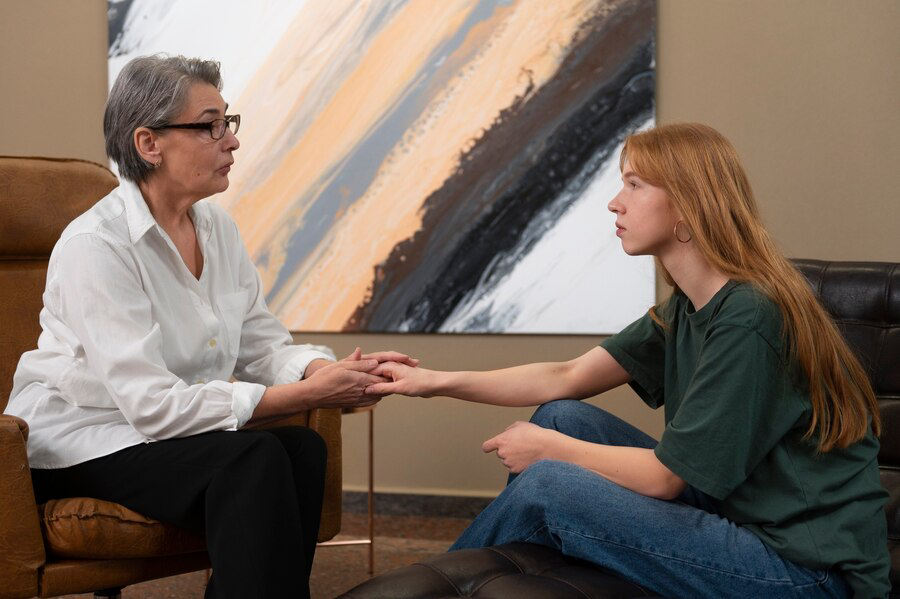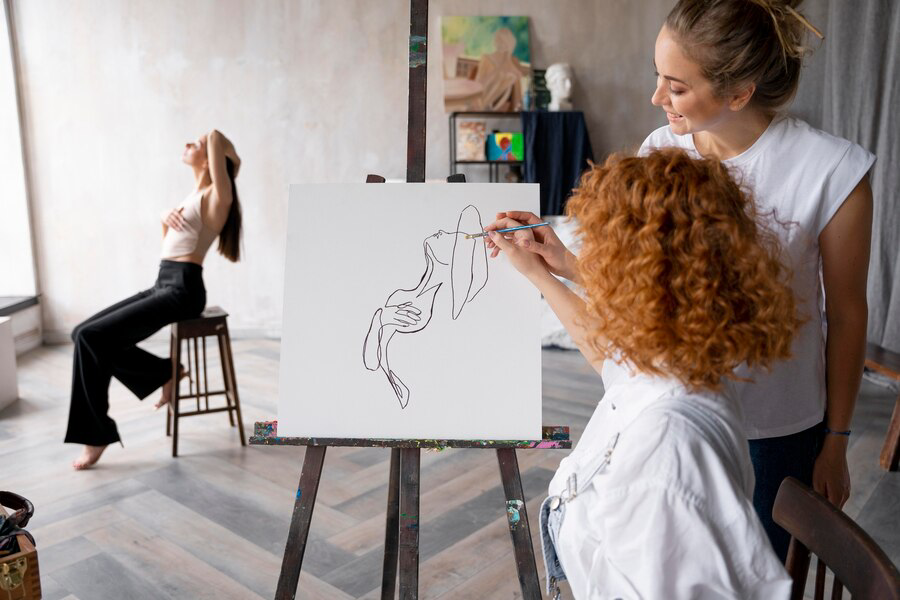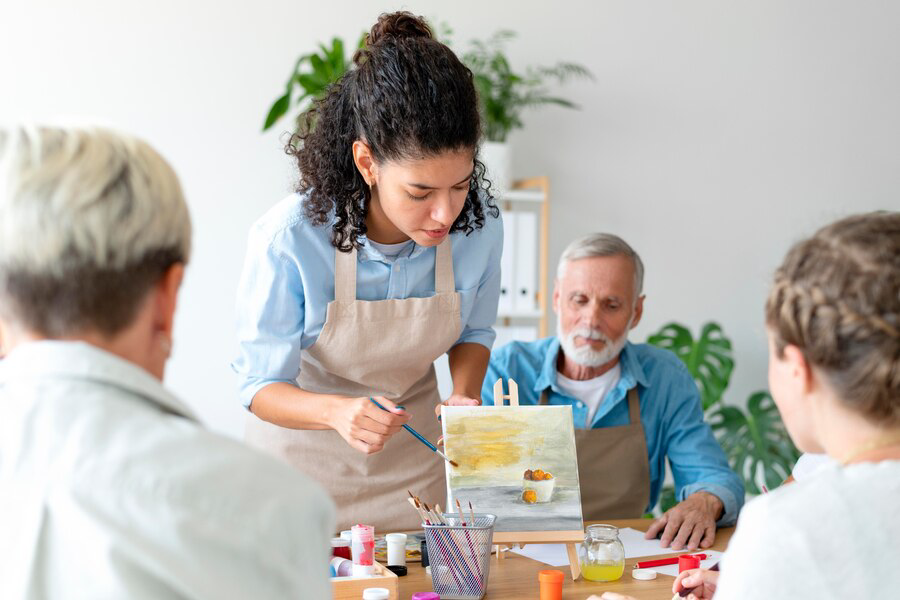Artistic expression has long been recognized as a powerful outlet for emotions, providing a unique and profound way for individuals to communicate their innermost feelings.
This form of expression, often referred to as artistic therapy, encompasses a range of creative activities such as painting, drawing, sculpting, and more, to facilitate emotional healing and well-being. Beyond just a recreational pursuit, artistic therapy has gained recognition for its potential to enhance emotional well-being in individuals.
In this blog, we will explore the various aspects of artistic therapy, its impact on emotional health, and how individuals can integrate it into their lives to achieve a greater sense of well-being.
The Healing Power of Artistic Therapy
Artistic therapy, also known as art therapy, is a form of psychotherapy that utilizes the creative process of making art to improve and enhance the physical, mental, and emotional well-being of individuals.

Unlike traditional talk therapy, artistic therapy taps into the expressive and symbolic qualities of art to help individuals explore their emotions, manage stress, and develop self-awareness. This unique approach provides a non-verbal means of communication, making it particularly effective for those who may struggle to express themselves through words alone.
Artistic Therapy Techniques
- Painting and Drawing
Visual arts, such as painting and drawing, are commonly used in artistic therapy. The act of creating images on canvas or paper can serve as a powerful means of expression. The choice of colors, strokes, and shapes can convey emotions that words may struggle to capture. The process of translating internal experiences into tangible visuals can be both therapeutic and illuminating.
- Sculpture and 3D Art
Working with three-dimensional art forms, such as sculpture, provides a tactile and hands-on experience. Sculpting allows individuals to physically mold their emotions, providing a tangible representation of their inner world. The process of shaping and reshaping materials can be a metaphorical journey of self-discovery and transformation.
- Music and Sound Therapy
Beyond the visual arts, music and sound therapy offer alternative avenues for emotional expression. Creating music, whether through playing instruments or composing, allows individuals to externalize their emotions through rhythm and melody. Listening to carefully curated playlists in a therapeutic setting can also evoke specific emotions and aid in processing them.
The Psychological Impact
- Emotional Release and Catharsis
Artistic therapy provides a safe space for emotional release. Through the act of creation, individuals can externalize their emotions, allowing for a cathartic experience. This process can be particularly beneficial for those struggling with repressed feelings, trauma, or overwhelming stress. Artistic expression serves as a healthy outlet for these emotions, preventing them from becoming bottled up.
- Self-Reflection and Insight
Engaging in artistic therapy fosters self-reflection. As individuals create art, they gain insights into their own thought processes and emotional patterns. This reflective aspect of artistic therapy promotes self-awareness, empowering individuals to better understand the roots of their emotions and make informed choices for their well-being.
Artistic Therapy and Emotional Well-being: A Symbiotic Relationship
-
Stress Reduction and Relaxation*
Artistic therapy has been shown to have a positive impact on stress reduction. Engaging in creative activities triggers the release of dopamine, a neurotransmitter associated with pleasure and reward. This not only enhances mood but also contributes to a sense of accomplishment and satisfaction. The meditative nature of certain artistic practices, such as coloring or repetitive movements in art creation, further promotes relaxation and stress relief.

-
Empowerment Through Creative Control*
Artistic therapy empowers individuals by giving them a sense of control over their creative expressions. In a therapeutic setting, individuals can choose the medium, colors, and techniques that resonate with them personally. This autonomy fosters a sense of empowerment, allowing individuals to take charge of their emotional narratives. This newfound creative control can extend beyond the art studio, influencing how individuals approach challenges and make decisions in their daily lives.
-
Building Emotional Resilience*
Regular engagement in artistic therapy can contribute to the development of emotional resilience. By expressing and confronting challenging emotions through art, individuals can gradually build resilience in the face of adversity. The creative process becomes a metaphor for navigating life’s ups and downs, instilling a sense of resilience that extends to various aspects of one’s emotional well-being.
The Therapeutic Process in Artistic Therapy
Artistic therapy is not solely about the end product but emphasizes the therapeutic process itself. Engaging in artistic activities provides individuals with a safe space to explore their emotions without the pressure of verbal articulation. The act of creation becomes a form of meditation, promoting mindfulness and self-reflection. Through this process, individuals can gain insights into their emotional states, identify patterns of thought, and develop coping mechanisms.
The therapeutic relationship in artistic therapy is unique, as the focus shifts from verbal communication to the interpretation of artistic expressions. Art therapists are trained to observe and understand the symbolism, colors, and patterns in a client’s artwork, facilitating a deeper understanding of their emotional landscape. This non-directive approach allows individuals to lead the therapeutic process, fostering a sense of autonomy and empowerment.
Conclusion
In conclusion, the marriage of artistic therapy and emotional well-being presents a compelling avenue for individuals seeking alternative approaches to mental health. The power of creative expression in unlocking, understanding, and processing emotions cannot be overstated. Artistic therapy offers a diverse range of modalities, allowing individuals to choose the form of expression that resonates most with them.
As we navigate the complexities of modern life, incorporating artistic therapy into our self-care routines can be a transformative step toward holistic well-being. Whether through painting, dancing, or other creative pursuits, individuals have the opportunity to tap into their inner worlds, fostering emotional resilience and self-discovery.
Are you ready to explore the transformative power of artistic therapy? Embrace the journey to enhanced emotional well-being through creative expression. Consider incorporating artistic activities into your routine, and discover the unique benefits that unfold when you allow art to be your guide on the path to self-discovery and emotional wellness. Take the next creative step today – your emotional well-being awaits.

